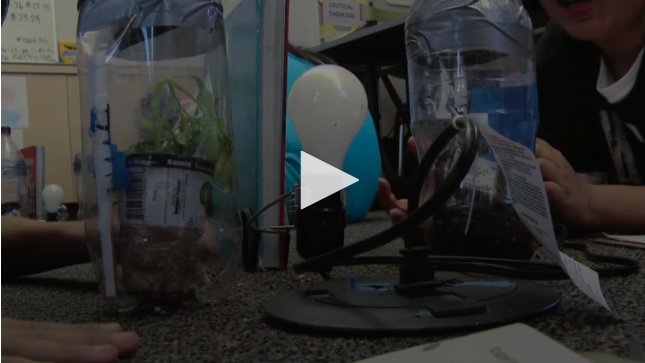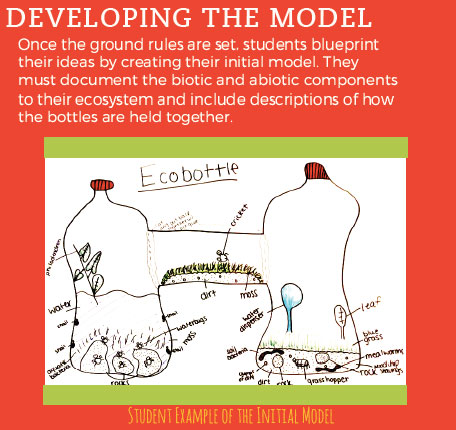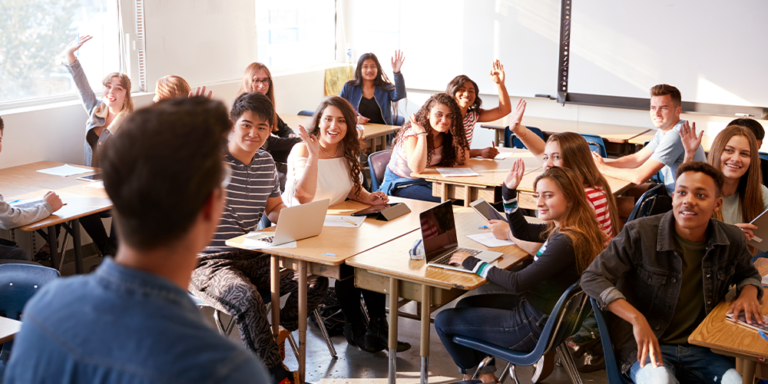Anyone who has spent time learning about the Next Generation Science Standards (NGSS) is familiar with the three-dimensional aspect of the Standards — an integration of disciplinary core ideas, cross-cutting concepts, and science and engineering practices. While most would reason science education has always involved themes and practices in addition to the content, the integral shift the NGSS offer is that each of these is given equal status.
The Next Generation Science Standards changed how science is assessed. Students must show proficiency in all three dimensions, not just content mastery.
Science and Engineering Practices
The Science and Engineering Practices are what we would traditionally think of as the skills taught in science classrooms. The Framework for K-12 Science Education lists the following eight practices:
- Asking questions (science) and defining problems (engineering)
- Developing and using models
- Planning and carrying out investigations
- Analyzing and interpreting data
- Using mathematics and computational thinking
- Constructing explanations (science) and designing solutions (engineering)
- Engaging in argument from evidence
- Obtaining, evaluating, and communicating information
Details on each of these practices can be found in Chapter 3 of the Framework and each one is summarized in Appendix F.
When looking at the standards, the practices can be seen embedded within each performance expectation. Each content piece (disciplinary core idea) is matched with a practice and a cross-cutting concept.

VIDEO: Climate Change in a Bottle: Complete Lesson
To view Climate Change in a Bottle in more “bite-sized” portions, check out the following videos:
- Climate Change in a Bottle: Overview
- Climate Change in a Bottle: The Lesson
- Climate Change in a Bottle: The Set-Up
- Climate Change in a Bottle: The Experiment
In the middle school life science standards, we ask students to develop a model to describe the cycling of matter and flow of energy among living and non-living parts of an ecosystem. In my school district, the life science teachers came together to create a storyline where students investigate the components of ecosystems and design a self-contained ecosystem in a bottle.

The Phenomenon and The Challenge
Natural phenomena are observable events that occur in the universe that students can use their knowledge of science to explain or make predictions about. The goal of building knowledge in science is to develop general ideas, based on evidence, that can explain and predict phenomena. In the case of engineering, students learn to design solutions to problems that arise from phenomena and to use explanations of phenomena to design solutions. Phenomena are the context for the work of both science and engineering. In this case, we examine interactions, energy, and dynamics of an ecosystem.




Developing and Using Models
There are many great resources available that describe what is and what is not a model. Some of these resources include:
- Bozeman Science: Developing and Using Models
- NSTA NGSS Hub: Developing and Using Models
The key message is that a model is not a 3D replica of the concept. Models can be diagrams, physical representations, or mathematical representations. Their focus is to explain a phenomenon, work through a design process, or make predictions surrounding a phenomenon.

To fit NGSS criteria, a model needs to be dynamic. Students should re-evaluate and revise their models based on new observations and new learning. The process of developing the model is just as important as the model itself. Students are evaluated on their ability to evaluate the merits and limitations of the model, reflect on the reliability of the model, and compare varying models of the same system.
Doing Science
Throughout the unit, students work towards developing a model of a self-sustaining ecosystem. Their dynamic model is revised to reflect new learning and more details are added as they work to justify why their ecosystem will work based on their understanding of matter and energy flow.

By beginning with a phenomenon and a driving question, students are engaged and motivated by the challenge. Learning becomes necessary to complete the challenge, which makes the content more purposeful and relevant.

This is one of our students’ favorite units of the year. You know they’re engaged because at the start of each new day, the students go straight to the windows to crowd around the bottles and see what changes have occurred. They excitedly point out to each other the new spider babies that have hatched, a snail that is cruising around the bottle surface, or the seedling that sprouted from a seed they planted.
Fully embracing the science and engineering practices helps ensure that all students are getting to participate in and observe an authentic science experience, rather than just learning or reading about it.
To learn more about the NGSS, visit our Deep Dive or other blog posts from our NGSS Squadsters.






